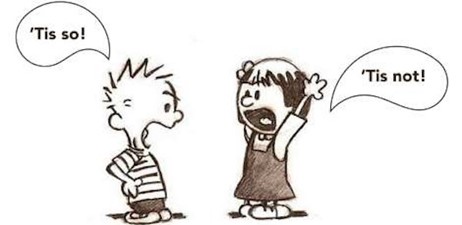“Strategy without tactics is the slowest route to victory. Tactics without strategy is the noise before defeat.”
Sun Tzu, The Art of War
Assuming that two armies have the same military strength and the same weaponry, which one will win in a battle?
Obviously, you say, the one with the better strategy and tactics.
Litigation is a battle in which the opposing armies (the parties) have the same military strength and weaponry (the law), and in which the key to victory lies in strategy and tactics.
Courtroom Strategy & Tactics
The strategy and tactics of litigation are not formally taught in law school, and only relatively recently has the art of advocacy become part of the syllabus at the King’s Inns. For centuries it has been something that barristers were expected to pick up as they went along – principally by observing other barristers and, thereafter, by trial and error.
In more recent times, advocacy training has been formalised and systematised to the point where it is now possible to enrol in intensive Advanced Advocacy courses that better equip barristers (of all levels of seniority) to deal with trial preparation, direct examination, cross-examination, oral submissions, and more.

Those that excel on the Advanced Advocacy courses are themselves invited to become Advanced Advocacy Trainers (and undergo further training for that purpose).
Those that excel at training are invited to submit themselves for evaluation by an accreditation panel and, if successful, become Internationally Accredited Advanced Advocacy Trainers.
Why learn advocacy?
If you’ve ever watched a case in court and thought ‘that witness was a great witness’, you need to learn more about advocacy. While sometimes a witness can inherently be a great witness, more often that not the ‘greatness’ is created by the advocate’s skill – in asking the right questions, developing the testimony in an interesting and logical chronology, avoiding uncharted waters, and allowing the witness to tell the story. That is the art of advocacy.
Conversely, the ‘terrible witness’ is often a result of mistakes by the advocate – failing to allow the witness an opportunity to ‘get comfortable’ in the witness box (start with some softball questions), jumping from place to place in the story without bringing the witness along logically, asking questions that the witness is not expecting, and so on. That is the opposite of the art of advocacy!
The difference between a good witness and a bad witness really comes down to the skills of the advocate. Happily, those skills can be learned.
Advocacy Training
Formal advocacy training is highly recommended as it most accurately resembles the real-life situation where an advocate receives a brief, analyses the legal issues and available evidence, consults with the witnesses, and develops a trial strategy based on all of these factors.
Once the strategy is developed, participants are invited to conduct direct examination or cross-examination of a particular witness and their advocacy is immediately reviewed, live, by a panel of trainers who offer helpful suggestions of ways in which the participants methods might be improved.
Although a daunting experience at the outset, the training courses quickly develop into constructive collaborative workshops where everyone learns from each review. I cannot recommend the courses highly enough to anyone looking to improve their grasp of the art of advocacy.
Advocacy Cheat Sheet

To tide you over until you can make it to an Advanced Advocacy course, here are a few tips that will improve your advocacy in any situation:
Preparation: When preparing a case, bar-stool it. Imagine a (non-lawyer) friend asks you, over a beer or a coffee, what the case is about. What is your answer? Do you say “My client is the executor of his mother’s last will and testament and the defendant to the proceedings which have been brought by a beneficiary who wishes to impugn the will based on the testatrix’s alleged diminished mental capacity”? I don’t think so. How about “It’s a dispute about the validity of a will”? Better. This is the first step in effective case preparation (there are several more steps!).
Direct: One fact per question. This will help keep your questions short, will help to develop the testimony in a meaningful way, will assist the decision-maker in following the evidence, will assist the witness in following your lead, and will help the advocate avoid the pitfall of asking hybrid questions that could confuse the witness.
Direct: Use Signposts. Let the witness and the decision-maker know when you are finished one area and moving on to another. “I now want to ask you some questions about …”. Again, this helps the witness, the decision-maker, and the advocate to follow the sequence of the testimony.
Direct: Have a dialogue. Imagine you are having a conversation with a friend (rather than with a witness). What would be the next logical question based on the answer they have just given? This maintains a good ‘flow’ to the witness’ testimony.
Cross: Elicit favourable answers first. List all the points you know the witness will agree with. Deal with those at the outset. This can serve to make the witness relax a little (‘this is going to be an easy ride’) which can be helpful when you start moving towards more contentious matters.
Cross: Only ask leading questions. Do not ask for information. Do not explore. Put a fact to the witness and move on. Do not ask the witness to explain. Do not ask for opinions. You give the evidence – the witness says ‘yes’ or ‘no’.
Cross: Cross-examination is a raid, not a siege. Get what you need and then sit down. Believe it or not, knowing when to sit down is one of the most important skills of the cross-examiner!
Gerard Groarke is an internationally accredited Advanced Advocacy Trainer.
